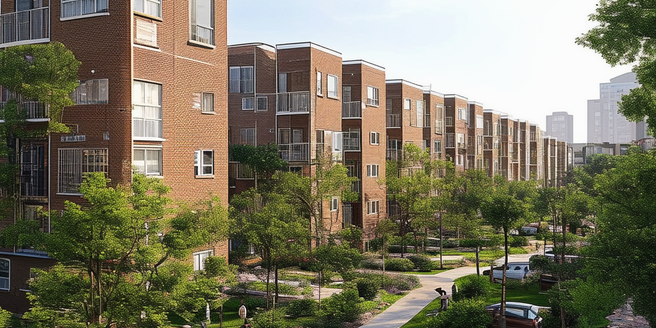Understanding the Basics: What is Section 8 Housing?
Section 8, officially known as the Housing Choice Voucher program, is a federal initiative designed to aid low-income families, senior citizens, and individuals with disabilities by making decent, safe, and sanitary housing more affordable and accessible in the private market. Funded primarily by the U.S. Department of Housing and Urban Development (HUD), the program’s administration at a local level is handled by Public Housing Authorities (PHAs). These PHAs play a crucial role in localising the policies and objectives of the Section 8 program, overseeing fund distribution, and managing applicants’ criteria and approval process within their jurisdiction, thus extending HUD’s work to a local, personalised level.
Rules and Regulations: The Housing Quality Standards (HQS)
Housing Quality Standards (HQS) are set forth by the Department of Housing and Urban Development (HUD) to maintain a base level of quality in housing across the United States, especially for housing under the Section 8 voucher program that aids low-income families, the elderly, and people with disabilities. Built on 13 fundamental components necessary for safe and comfortable living, these standards range from essential sanitary facilities to security, space, and electricity. An HQS inspection evaluates properties based on these components to ensure suitability for residents and promotes a better quality of life for residents of the voucher program.
Compliance: Preparing for the HQS Inspection
To prepare for a Housing Quality Standards (HQS) inspection, meticulously overview your property to ensure it meets regulations set by the HQS. This process requires adherence to 13 major elements ranging from safe accessibility, livable areas, functioning utilities like electricity and water, to effective sanitation facilities. These standards aim to confirm that the property is safe, clean, and sound for the occupants. Living areas, for example, must be well-lit, ventilated, spacious, pest-free, and safe. Similarly, vital utilities such as heating and cooling systems, lighting, and water must be maintained and fully operational. Strict cleanliness measures including pest control, waste disposal, and general hygiene practices are also scrutinized. These are not mere guidelines, but rules enforced by the relevant authority, with non-compliance potentially leading to significant consequences, including potential loss of subsidy for the property owner.
In-depth: The 13 Key Areas of HQS Inspection
The Housing Quality Standards (HQS) inspection evaluates 13 critical areas like sanitation, heating, plumbing, and access to ensure properties meet tenant comfort and safety needs. The inspection serves to reduce health and safety violations, requiring standards such as cleanliness, adequate access to water, and tenant accessibility. This thorough process holds landlords and property managers accountable to not only meet, but potentially exceed, these minimum standards. Hence, ensuring a beneficial situation where both property owners and tenants experience peace of mind, comfort, and a healthy environment in their living quarters. This emphasizes the necessity to understand the broad scope of the HQS inspection.
Overcoming Challenges: Common Failures and How to Fix Them
Failing an HQS inspection can initially seem like a grave matter. However, understanding common reasons for failures can significantly increase the chances of passing. These failures range from easily fixable ones like peeling paint, which may point to structural damage, to overlooked safety hazards like blocked exits. Moreover, faulty smoke detectors can lead to immediate inspection failure due to their vital role in providing fire warnings. In conclusion, landlords must regularly identify and fix common failures to increase functionality, safety, and the property’s aesthetic appeal, drastically boosting the chances of a successful inspection.
Continued Compliance: Periodic Inspections and Ongoing Maintenance
The Public Housing Agency (PHA) ensures the consistent application of Housing Quality Standards (HQS) through regular, in-depth inspections. Landlords play a pivotal role in maintaining these standards by caring for and maintaining their properties, thus enhancing tenants’ living conditions and avoiding potential penalties or sanctions. It’s crucial for landlords to swiftly address any issues that surface in their properties, from minor repairs to major structural problems, to sustain the necessary quality benchmarks and lower the risk of undergoing subsequent PHA inspection failures. Essentially, PHA and landlords share the responsibility for HQS compliance – the former through inspections and the latter by keeping properties up to par and efficiently managing emerging issues. In collaboration, they ensure safe and quality housing for tenants.



